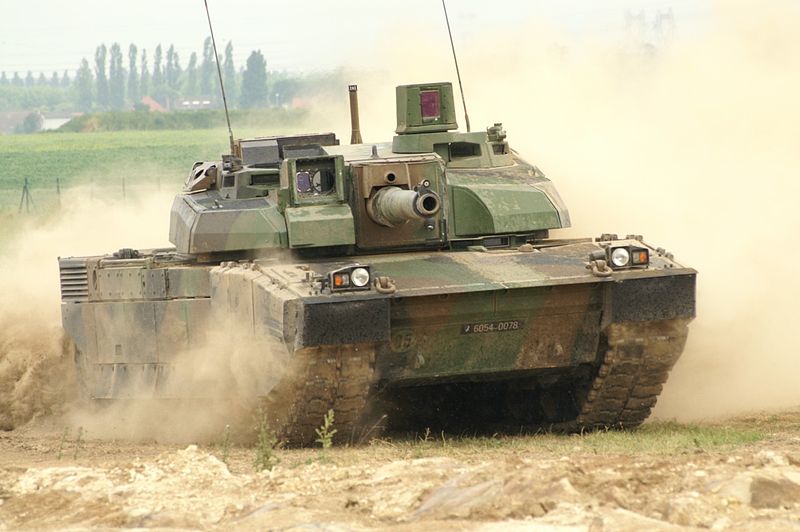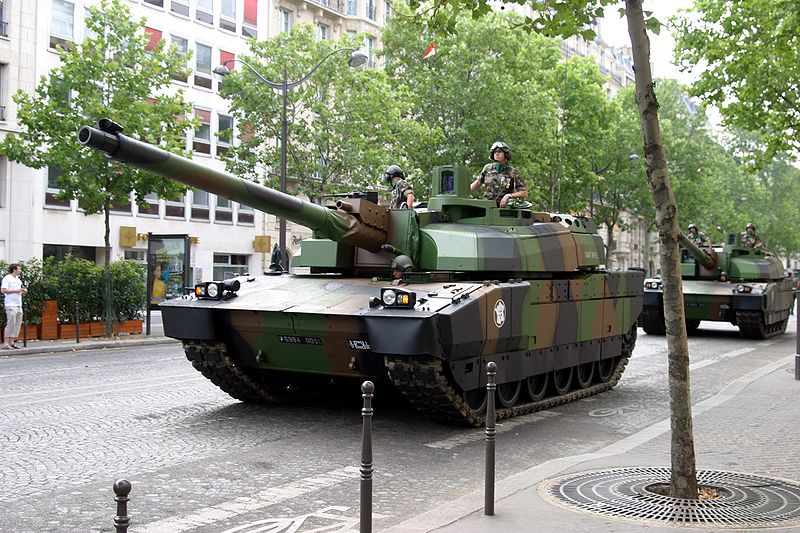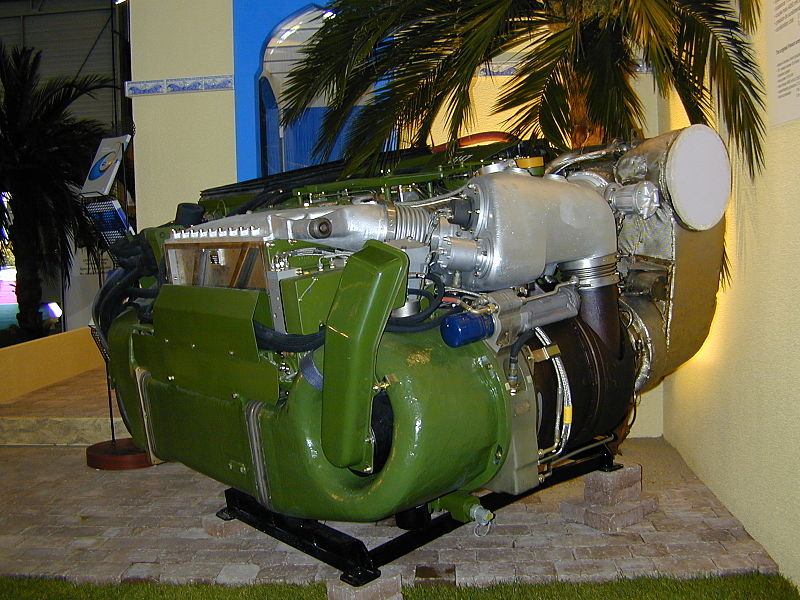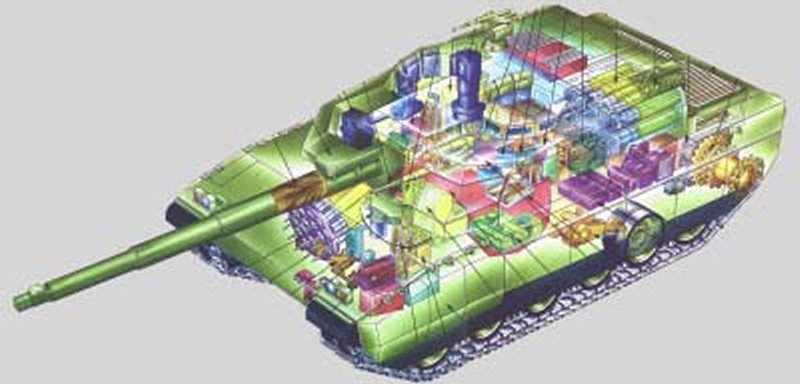AMX-56 Leclerc

AMX-56 specifications
Dimensions (l-w-h):9.87 oa (6.88) x 3.60 x 2.62 m ( x x in)
Total weight, battle ready:54,5 to 57,4 Tons (xxx ibs)
Crew :3 (Driver, Commander, Gunner)
Propulsion:SACM V8X 8-cyl, 4 stroke diesel 1,500 hp, 27.52 hp/t (1,100 Kw)
Suspensions:Hydrogas-assisted torsion arms
Top Speed72 kph (45 mph) 55 kph off-road
Range (road)/Fuel consumption550 to 650 (400 mi) for 1300-1700
LArmament (see notes)Main: 120 mm sb GIAT CN120-26/52 with 40 rounds
Sec: 12,7 mm M2HB coax. (1,100 rounds)
Sec: 7,62 mm AA-52 LMG (3,000 rounds)
ArmourClassified, composite modules, NERA/ERA.Total Production860

The lightest & fastest western MBT
The Leclerc is recognised by numerous world’s defence experts as being certainly in the “top five” of today’s best MBTs although its chances to stay so are now reduced due to its age and the arrival of recent and very serious contenders. However as we recall these grades are worthless until the tank is battle-tested against equivalents. These considerations does not diminish the technical achievement done by GIAT with the AMX-56, furthermore when compared to the previous AMX-30. The latter was in effect the product of an early cold war reflexion which emphasised mobility over protection, but the second solved this issue while maintaining in its development the cursor over mobility and firepower. It was the fastest and most expensive tank in the world when entering service in 1991.
It must also be noted that the AMX 56 designation, while very popular with the media and many military-oriented websites, is not used in anyway officially.
Mobility
The raison d’être of the new AMX-56 design was its active protection, embodied by a top speed, off-road speed, and in general excellent mobility characteristics. In recent years comparative trials showed the Leclerc’s performances were above those of the current MBTs of the time, including the Leopard 2, Challenger and Abrams, both in terms of speed and acceleration. This was not achieved by raw engine power but rather through small dimensions and thus limited weight. In this respect, only Soviet tanks of the contemporary T-64/72/90 types are comparable, although the latter have a much lower profile. For the first version planned back in 1986 the V12X Poyaud diesel engine previously tried on the AMX-40 design was once considered, but due to the new weight class and problems encountered, quickly dismissed. Instead, it was sourced abroad, giving the SACM V8X-1500 1,500 hp Hyperbar engine. SACM is a subsidiary or the Finnish company Wärtsilä, better known for its numerous marine engines and naval industries.
This 8-cylinder powerplant gave 1,100 kW or 1,500 hp, which combined with the overall initial weight of the serie 1 (54.5 tons) gave a ratio of 27.52 hp/tonne, unsurpassed in the west. Indeed, only today’s Russian T-80U (27.2 hp/ton) and the T-90SM (26.3 hp/ton) came close, but are slightly slower, especially off-road. This contributed to creating an image of “racetank” reminiscent of Christie’s 1930s prototypes. Indeed, its top speed was well above 80 kph (on road) in initial trials, but to manage the engine long-term battlefield reliability, it was governed electrically to 72 kph (45 mph). Due to entirely revamped suspensions, the off-road capabilities are also largely over the charts, from 50 to 55 mph on average. Torque is 4850 Nm at 1700 RPM.
The power is transmitted through an automatic SESM ESM500 to the rear drive sprockets and has five forward and two reverse gears. Speeds are pre-selected and one speed could be engaged in emergency. The Leclerc is able to turn on the spot. When braking at 30 kph a hydrokinetic retarder is automatically engaged, slowing down the tank at a deceleration rate of 7 m/s² (0.7 g). Therefore the braking system is hybrid as there are in addition two manganese-ceramic disk brakes mounted beside the final drives on the rear and a mechanical parking brake.
There is an electronic engine management system supplied by Safran. The acceleration is obtained by a French gas turbine acting as an “hyperbar” system, at 0-32 kph in 5.5 to 6 seconds. This Turbomeca TM 307B gas turbine (derived from a helicopter engine and fuelled with high-octane kerosene) inside the engine acts as a turbocharger, works as an anti-lag system and an APU, providing auxiliary power to all systems when the main engine is shut down. The turbine provides a high boost pressure of 7.5 bar and an effective pressure of 32.1 bar. By comparison, the Wärtsila RTA96 diesel -the world’s largest- has 18.6 bar. To reduce the infrared signature, the rear left engine exhaust is cooled with the air from the cooling fans within the hull rear. Overall, this powerplant is extremely quiet and compared well to the Abrams power unit in this respect. In addition, the location and particulars of the exhaust made it easier to the following infantry to come close. However, the exhaust flows vertically through a small pipe which avoids burning the surroundings but made it a more visible heat signature at high speed. However, the clean burning process strongly reduces this thermal signature when traveling slowly even at short range.

AUTOLOADER

AMX-56 specifications
Dimensions (l-w-h):9.87 oa (6.88) x 3.60 x 2.62 m ( x x in)
Total weight, battle ready:54,5 to 57,4 Tons (xxx ibs)
Crew :3 (Driver, Commander, Gunner)
Propulsion:SACM V8X 8-cyl, 4 stroke diesel 1,500 hp, 27.52 hp/t (1,100 Kw)
Suspensions:Hydrogas-assisted torsion arms
Top Speed72 kph (45 mph) 55 kph off-road
Range (road)/Fuel consumption550 to 650 (400 mi) for 1300-1700
LArmament (see notes)Main: 120 mm sb GIAT CN120-26/52 with 40 rounds
Sec: 12,7 mm M2HB coax. (1,100 rounds)
Sec: 7,62 mm AA-52 LMG (3,000 rounds)
ArmourClassified, composite modules, NERA/ERA.Total Production860

The lightest & fastest western MBT
The Leclerc is recognised by numerous world’s defence experts as being certainly in the “top five” of today’s best MBTs although its chances to stay so are now reduced due to its age and the arrival of recent and very serious contenders. However as we recall these grades are worthless until the tank is battle-tested against equivalents. These considerations does not diminish the technical achievement done by GIAT with the AMX-56, furthermore when compared to the previous AMX-30. The latter was in effect the product of an early cold war reflexion which emphasised mobility over protection, but the second solved this issue while maintaining in its development the cursor over mobility and firepower. It was the fastest and most expensive tank in the world when entering service in 1991.
It must also be noted that the AMX 56 designation, while very popular with the media and many military-oriented websites, is not used in anyway officially.
Mobility
The raison d’être of the new AMX-56 design was its active protection, embodied by a top speed, off-road speed, and in general excellent mobility characteristics. In recent years comparative trials showed the Leclerc’s performances were above those of the current MBTs of the time, including the Leopard 2, Challenger and Abrams, both in terms of speed and acceleration. This was not achieved by raw engine power but rather through small dimensions and thus limited weight. In this respect, only Soviet tanks of the contemporary T-64/72/90 types are comparable, although the latter have a much lower profile. For the first version planned back in 1986 the V12X Poyaud diesel engine previously tried on the AMX-40 design was once considered, but due to the new weight class and problems encountered, quickly dismissed. Instead, it was sourced abroad, giving the SACM V8X-1500 1,500 hp Hyperbar engine. SACM is a subsidiary or the Finnish company Wärtsilä, better known for its numerous marine engines and naval industries.
This 8-cylinder powerplant gave 1,100 kW or 1,500 hp, which combined with the overall initial weight of the serie 1 (54.5 tons) gave a ratio of 27.52 hp/tonne, unsurpassed in the west. Indeed, only today’s Russian T-80U (27.2 hp/ton) and the T-90SM (26.3 hp/ton) came close, but are slightly slower, especially off-road. This contributed to creating an image of “racetank” reminiscent of Christie’s 1930s prototypes. Indeed, its top speed was well above 80 kph (on road) in initial trials, but to manage the engine long-term battlefield reliability, it was governed electrically to 72 kph (45 mph). Due to entirely revamped suspensions, the off-road capabilities are also largely over the charts, from 50 to 55 mph on average. Torque is 4850 Nm at 1700 RPM.
The power is transmitted through an automatic SESM ESM500 to the rear drive sprockets and has five forward and two reverse gears. Speeds are pre-selected and one speed could be engaged in emergency. The Leclerc is able to turn on the spot. When braking at 30 kph a hydrokinetic retarder is automatically engaged, slowing down the tank at a deceleration rate of 7 m/s² (0.7 g). Therefore the braking system is hybrid as there are in addition two manganese-ceramic disk brakes mounted beside the final drives on the rear and a mechanical parking brake.
There is an electronic engine management system supplied by Safran. The acceleration is obtained by a French gas turbine acting as an “hyperbar” system, at 0-32 kph in 5.5 to 6 seconds. This Turbomeca TM 307B gas turbine (derived from a helicopter engine and fuelled with high-octane kerosene) inside the engine acts as a turbocharger, works as an anti-lag system and an APU, providing auxiliary power to all systems when the main engine is shut down. The turbine provides a high boost pressure of 7.5 bar and an effective pressure of 32.1 bar. By comparison, the Wärtsila RTA96 diesel -the world’s largest- has 18.6 bar. To reduce the infrared signature, the rear left engine exhaust is cooled with the air from the cooling fans within the hull rear. Overall, this powerplant is extremely quiet and compared well to the Abrams power unit in this respect. In addition, the location and particulars of the exhaust made it easier to the following infantry to come close. However, the exhaust flows vertically through a small pipe which avoids burning the surroundings but made it a more visible heat signature at high speed. However, the clean burning process strongly reduces this thermal signature when traveling slowly even at short range.
AUTOLOADER

